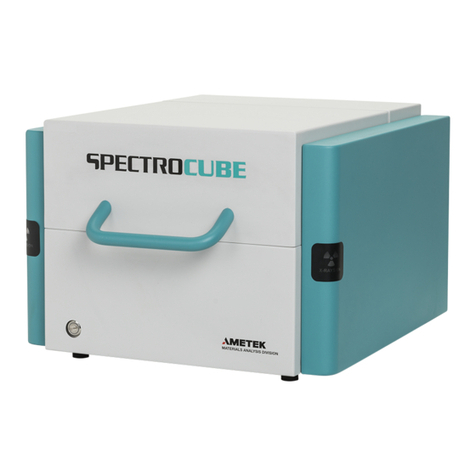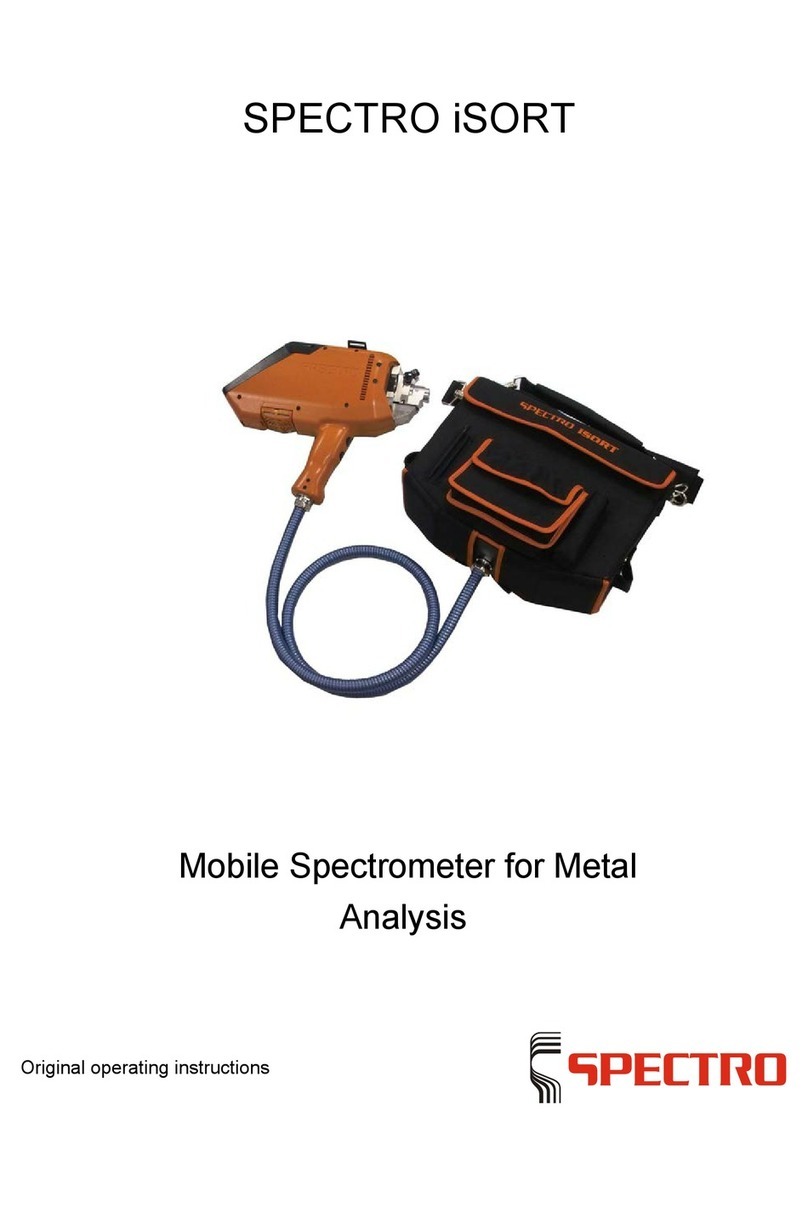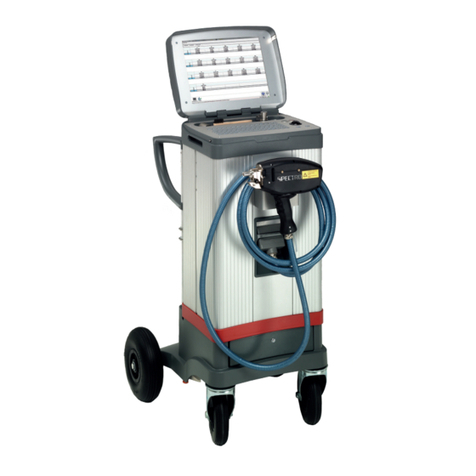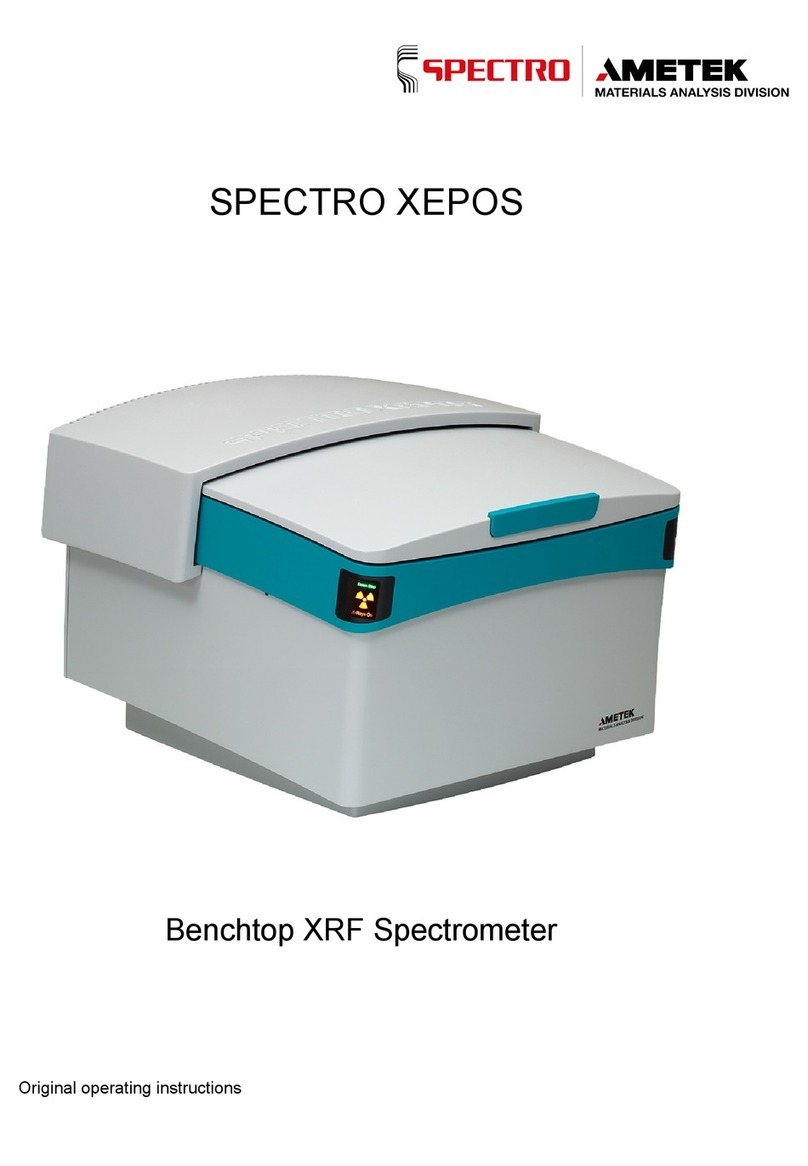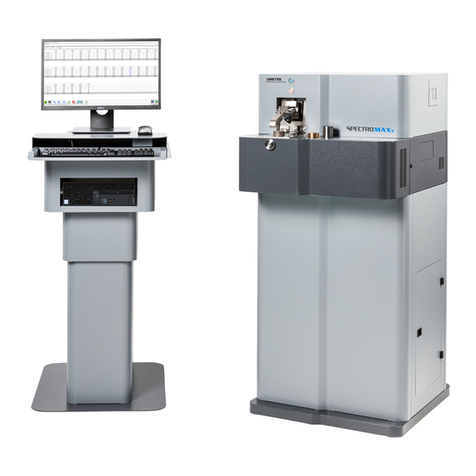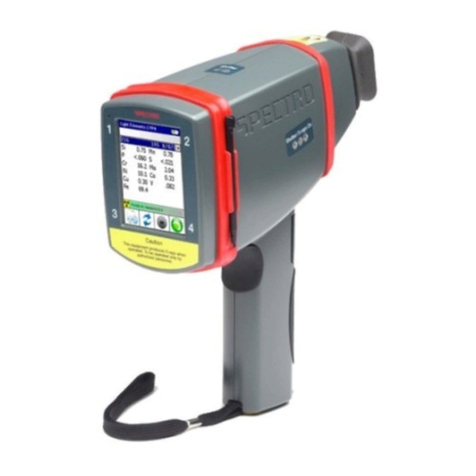
SPECTROLAB — 30.07.2015 — 3
Table of Contents
1Description of instrument....................................................................................5
1.1Description.......................................................................................................................... 5
1.2Function.............................................................................................................................. 5
1.3Overview............................................................................................................................. 6
1.3.1Instrument (front)................................................................................................... 6
1.3.2Instrument (back)................................................................................................... 7
1.3.3Spark stand ........................................................................................................... 8
2Safety..................................................................................................................9
2.1Symbols used ..................................................................................................................... 9
2.2User information................................................................................................................ 10
2.3Intended use..................................................................................................................... 11
2.4Prohibited operating conditions ........................................................................................ 11
2.5Residual risks.................................................................................................................... 11
3Technical data...................................................................................................14
4Transportation/Setting-up .................................................................................15
4.1Space requirements.......................................................................................................... 16
4.2Storage ............................................................................................................................. 16
4.3Gas supply........................................................................................................................ 17
5Initial start-up ....................................................................................................18
5.1Preparing the instrument for use ...................................................................................... 18
6Operation..........................................................................................................19
6.1Overview of controls ......................................................................................................... 19
6.2Switching on the instrument.............................................................................................. 20
6.2.1Argon saving module........................................................................................... 20
6.3Switching offthe instrument............................................................................................... 21
6.4Measuring procedure........................................................................................................ 22
6.4.1Preparing the measuring procedure.................................................................... 23
Re-profiling the optics and standardizing the instrument (only LAVM12)........... 23
Re-profiling the optics.......................................................................................... 23
Standardizing the measuring device (only LAVM12).......................................... 24
iCALising the measuring device (iCAL) (only LACM12)...................................... 24
Changing the base (multi-base instruments only)............................................... 24
6.4.2Proceed with the measurement........................................................................... 25
7Maintenance .....................................................................................................26
7.1Maintenance schedule...................................................................................................... 26
7.2Maintenance Reminder..................................................................................................... 26
7.3General Maintenance........................................................................................................ 27
7.4Clean the light inlet window of the optics (MgF2)............................................................. 28












